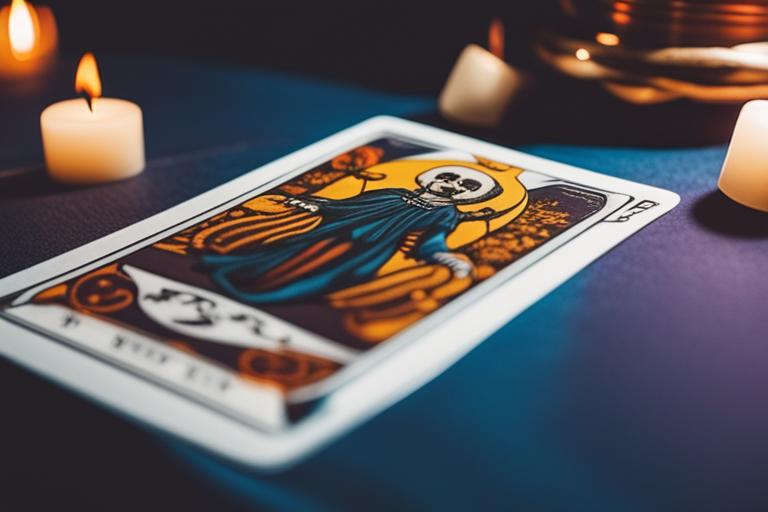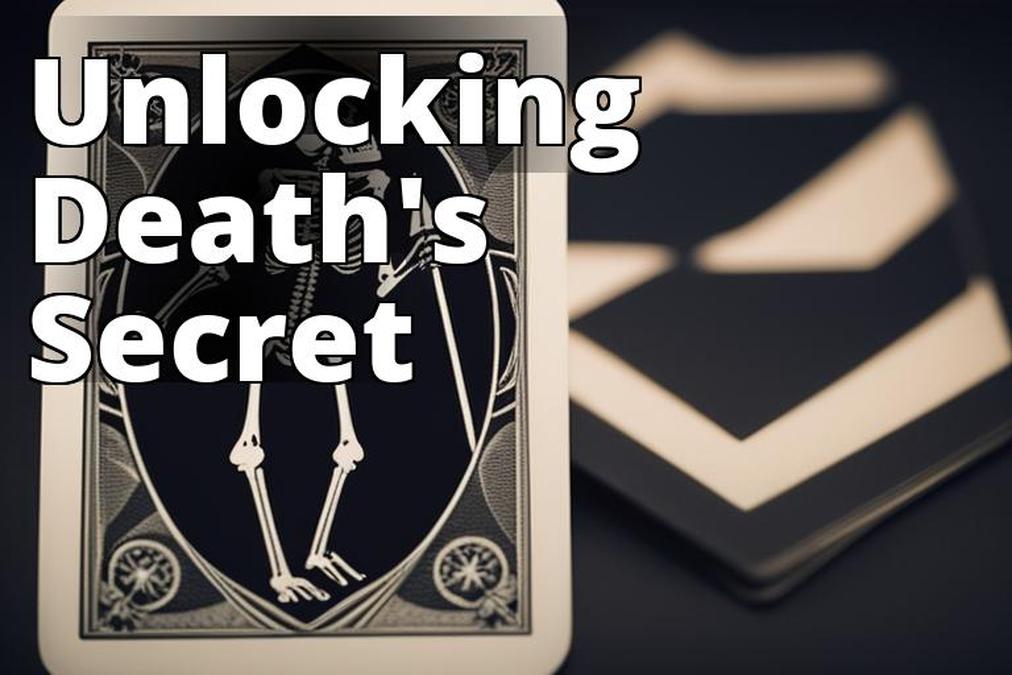What is the Death tarot card and what does it mean? The Death tarot card is one of the most misunderstood cards in the deck, often associated with physical death or bad luck. However, the Death card is not a sign of physical death, but rather symbolizes transformation, change, and rebirth.
| Card Position | Interpretation |
|---|---|
| Past | A past event has led to the current situation and it’s time to let go and move on. |
| Present | A major change or transformation is currently taking place in the querent’s life. |
| Future | A major change or transformation is yet to come, but it’s important to embrace it and let go of the old. |
| Career | The end of one job or career path and the beginning of a new one. |
| Relationships | The end of a relationship and the beginning of a new phase of life for both parties. |
| Personal Growth | The need to let go of old patterns and beliefs in order to make room for new experiences and opportunities. |
The Death tarot card is the thirteenth card in the major arcana of the tarot deck. It is often depicted as a skeletal figure riding a white horse, carrying a black flag with a white flower on it. The card is surrounded by symbols of death and rebirth, such as a rising sun and a river.
Despite its ominous appearance, the Death card is not a sign of physical death. Rather, it represents the end of one cycle and the beginning of another. In tarot readings, the Death card often indicates a major change or transformation in the querent’s life, such as the end of a relationship, a job loss, or a move to a new location.
The Death Tarot Card: Embracing Change and Letting Go
- The death tarot card represents transformation, change, and rebirth.
- It is often misunderstood and associated with death, but it actually symbolizes new beginnings.
- The Death card is commonly used in spiritual and divination practices for shadow work and personal growth.

Symbolism of the Death Tarot Card
The Death tarot card is rich in symbolism, with each element conveying a deeper meaning. The skeletal figure represents the end of the physical body and the beginning of the spiritual journey. The white horse represents purity and innocence, while the black flag with the white flower symbolizes the balance between life and death.
The rising sun in the background represents the dawn of a new day, while the river symbolizes the flow of life and the passage of time. The bridge that the skeletal figure is crossing represents the transition from one phase of life to another, while the figures on either side of the card represent the past and the future.
When interpreting the Death tarot card, it is important to understand the significance of each symbol and how they relate to the querent’s situation. For example, if the card appears in a reading about a relationship, the skeletal figure may represent the end of the relationship and the beginning of a new phase of life.

Interpretation of the Death Tarot Card
The Death tarot card can appear in a number of different positions in a tarot spread, each with its own interpretation. In the past position, the card may indicate a past event that has led to the current situation. In the present position, the card may indicate a major change or transformation that is currently taking place in the querent’s life. In the future position, the card may indicate a major change or transformation that is yet to come.
Regardless of its position in the tarot spread, the Death card always represents change, transformation, and rebirth. It is a reminder that everything in life is impermanent, and that we must embrace change in order to grow and evolve.
The Death tarot card is often associated with themes of transformation, change, and rebirth. It is a symbol of letting go of the old and embracing the new, of shedding old patterns and beliefs and opening ourselves up to new experiences and opportunities. In this way, the Death card is a powerful reminder that change is not something to be feared, but rather something to be embraced as a natural part of the human experience.

Real-Life Examples
To better understand the Death tarot card’s interpretation and symbolism in practice, let’s explore a few real-life examples:
- In a reading about a career change, the Death card might indicate the end of one job or career path and the beginning of a new one.
- In a reading about a romantic relationship, the Death card might represent the end of the relationship and the beginning of a new phase of life for both parties.
- In a reading about personal growth and transformation, the Death card might indicate the need to let go of old patterns and beliefs in order to make room for new experiences and opportunities.

The Death Tarot Card in Spiritual and Divination Practices
The Death tarot card is a powerful tool for spiritual and divination practices. It is often used in shadow work, a process of exploring and healing our past traumas and wounds. When the Death card appears in a reading about shadow work, it may indicate that it is time to confront and heal old wounds in order to move forward in life.
The Death tarot card is also significant in personal growth and transformation. It is a reminder that change is necessary in order to grow and evolve, and that we must be willing to let go of the old in order to make room for the new. In this way, the Death card can be a powerful catalyst for personal growth and transformation.
Embracing Change: A Personal Story
Change can be a difficult concept for some people to grasp. It can bring up feelings of uncertainty, fear, and anxiety. But for me, the Death tarot card has been a symbol of liberation and transformation.
I first encountered the Death card during a particularly challenging time in my life. I had just lost my job and was struggling to find a new one. I felt stuck and unsure of what the future held for me. During a tarot reading, the Death card appeared in the “future” position.
At first, I was taken aback. The skeletal figure on the card seemed ominous and foreboding. But as I delved deeper into the symbolism of the card, I began to see it in a different light. The Death card wasn’t necessarily about physical death, but rather about letting go of old patterns and embracing change.
As I embraced the message of the Death card, I began to see the possibilities that lay ahead of me. I started exploring new career paths and taking risks that I never would have considered before. It wasn’t easy, but I knew that I had to let go of my old ways of thinking and embrace change if I wanted to move forward.
Now, years later, I can look back on that time in my life with gratitude. The Death card was a powerful symbol of transformation for me, and it helped me to embrace change in a way that I never thought was possible.
Conclusion
The Death tarot card is a powerful symbol of change, transformation, and rebirth. Despite its ominous appearance, the card should not be feared, but rather embraced as an opportunity for growth and renewal. By understanding the symbolism and interpretation of the Death tarot card, we can gain insight into our own lives and use the card as a tool for personal growth and transformation.
As we continue on our spiritual journeys, let us remember the power of the Death tarot card and its role in personal growth and transformation. By embracing change and letting go of the old, we can create space for new experiences and opportunities in our lives.
Questions
Who is represented by the death tarot card?
Death tarot card represents transformation and change in life.
What does the death tarot card symbolize?
The death tarot card symbolizes the end of one phase and the beginning of another.
How is the death card interpreted in a reading?
It’s interpreted as an indication of a significant change or transformation in life.
Who should avoid the death tarot card in a reading?
Those who are highly sensitive to the idea of death should avoid the death tarot card.
What if the death tarot card appears in a reading?
Don’t panic. It represents transformation, not literal death.
How can I use the death tarot card for personal growth?
Embrace change and transformation, and use the card as a tool for self-reflection.







